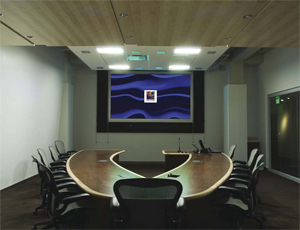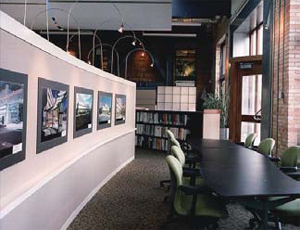The green building movement has gained serious momentum during the first decade of the 21st Century, and all signs indicate that firms in the design and construction industry will continue to push hard to incorporate as many sustainable features as possible in virtually every future project that is conceived and built.



And for some firms, it starts with their own office space. “Walking the walk,” so to speak, not only improves working conditions for their own employees, but also allows firms to showcase sustainability first hand to potential clients in a working environment.
“For us, it’s an experiment,” says Skip Greene, president of Spectrum Engineers, whose firm moved into a newly renovated Salt Lake City headquarters earlier this year that is aiming for LEED-Platinum certification from the U.S. Green Building Council. “It was important to us to incorporate sustainability into our office on every level possible. We can make adjustments as we figure out better ways of doing things.”
Greene, whose firm provides electrical and mechanical engineering services in addition to lighting design, acoustical design and building commissioning, adds that his firm is carefully monitoring power for all systems, including water heaters, HVAC systems, lighting, outlets, etc. “We’re trying to learn how to do everything better,” Greene says. “Energy efficiency is something we take very seriously.”
GSBS Architects of Salt Lake City recently won a “Walk the Walk” competition that was sponsored by the Utah Chapter of the American Institute of Architects Utah Chapter. According to Clio Miller, a project architect, GSBS did things like renovating its roof with a high albedo white material and adding four in. of R-24 insulation to reduce heat-island effects, switching to all LCD computer monitors instead of CRT for greater energy savings, installing skylights and task lighting for greater amounts of daylighting throughout the office while reducing ambient light, and instilling within employees a corporate mentality where everyone contributes to energy savings by making sure computers and lights are turned off at the end of the day.
“We ended up with an Energy Star rating of 61, which is good,” says Miller. “Part of being a sustainable firm is creating a good environment for employees. Nearly every occupant has a view to the outside; that connection is appreciated by the user. Heating and cooling systems are also set at 68 to 74 degrees, which limits the extreme of what that control can provide. There are a lot of little things that can make a big difference in being environmentally conscious.”
“We’ve been doing environmentally responsible architecture for 30 years,” says David Brems, a principal with GSBS. “Clients just expect that component of our design. They want to know how much you can do for them within their budget.”
“We want to do the best we can for our clients,” adds Miller. “We’re not sitting on the sidelines waiting – we’re proactive with virtually every project we design. We will offer suggestions and gently nudge our clients to do a more sustainable project.”
Other design firms in Salt Lake City, like MHTN Architects, FFKR Architects, and Colvin Engineering Associates have also renovated their offices within the past year to be more energy efficient and employee friendly.
MHTN’s leaders decided that getting its office LEED certified was an essential step in proving the firm’s dedication to sustainable design.
“We felt it would be a great opportunity to showcase our knowledge of sustainability and put into action what we’ve been talking about for many years,” says Kyle Taft, an MHTN principal. Taft says MHTN did everything possible to secure LEED-Platinum certification, but fell a single point shy, meaning it will be a LEED-Gold project. Taft says the firm’s lighting system contributes to energy savings, in addition to abundant sources of natural daylighting.
“Our lighting is augmented with highly reflective ceiling tiles in select locations above light fixtures,” says Taft. “We tied the lighting system in with sensors that monitor the amount of daylight that is present and will shut off banks of lighting when it’s not needed to increase energy conservation.
“We believe in sustainable design and feel it’s the responsible thing to do,” he says. “It offers great benefits to our employees as well. It’s a more comfortable workplace and everybody has a view to the exterior.”
Colvin Engineering recently had its office earn an Energy Star award from the U.S. Environmental Protection Agency, an award that spotlights buildings that are among the top one-fourth nationally in energy efficiency. Colvin principal Steve Connor says the award illustrates his firm’s commitment to sustainability.
“We’re proud to be recognized for this achievement,” says Connor. “As leaders in sustainable design in Utah, we feel we must practice what we preach. Our historic building achieving this Energy Star award...


Post a comment to this article
Report Abusive Comment